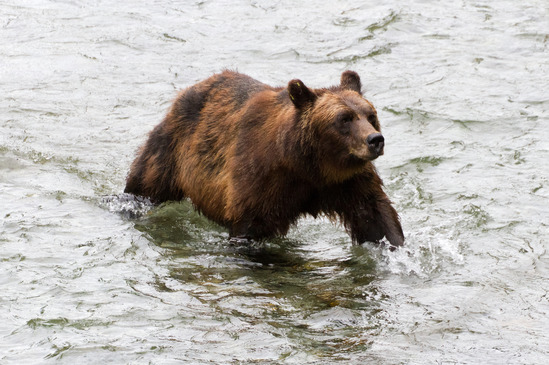How to stay safe around wild animals

In the summer months, Canadians flock to our beautiful national parks to connect with nature, take in incredible views, and witness wild animals in their natural habitat. It is the latter that can sometimes lead to serious trouble.
Often wildlife such as deer, elk, bear, wolves, coyotes and cougars can appear unconcerned with the presence of humans. They may barely notice us in their midst. They can seem almost…tame.
But it’s important to remember that animals in national parks are wild. That means they are unpredictable and have the potential to be very, very dangerous - particularly if they feel provoked or threatened.
Nearly half of wildlife attacks are the result of human behaviour
In a study published on Nature.com, researchers found that “about half of 700 reported carnivore attacks in North America and Europe have involved risk-enhancing human behaviours.”
Some of the main causes of these attacks included innocent activities such as accidentally walking close to a female animal with her young, or by a carcass with a bear nearby, or having an encounter with a food-conditioned animal. A food-conditioned animal is a wild animal that has developed a taste for human food due to food being left out where the animal can find it, or visitors intentionally feeding an animal.
Other attacks occurred when children were left unattended, dogs were walked off-leash, or people went searching for a wounded carnivore while hunting.
Stay Smart Around Wild Animals
Keep food and other attractants securely stored
- Store food, garbage and dog food securely so carnivores can’t get to it. Camping coolers are NOT bear-proof. It’s better to keep food in a locked vehicle and make sure garbage is placed in bear-proof bins
- Don’t leave dirty dishes, pots, BBQs, empty pet food bowls or even dirty dish water out
- Don’t leave toothpaste, soap or other toiletries out
Protect children and pets
- Never leave children unattended outdoors
- Never attempt to take a photo of your child with a wild animal
- Walk with your dog on a leash
- Don't leave dogs unattended outside. They can attract carnivores and may be attacked
View wild animals from a distance
- If you see a wild animal, stay quiet and as discreet and insignificant as possible
- Stay at least 100 metres (or 10 bus lengths) away from the animal
- Use binoculars or a telephoto lens for a closer look
- If you see an animal while driving, pull safely out of traffic onto the shoulder
- Do not leave your vehicle. Remember that most animals are faster than you are
- Don’t roll down your window and call the animal to get him to come closer
Drive carefully where the wild animals are
- Drive slower at dusk and dawn when animals are more active and visibility is poor
- Drive even slower if you see an animal at the side of the road in case it decides to cross
- Remember if there is one animal by the road, it’s likely there are others nearby
- If you do hit an animal with your vehicle, don’t forget to notify your insurance agent. If it’s safe to do so, pull over and take photos of the scene. In most cases, your insurance rates will not be affected. Animal-related accidents are usually filed under comprehensive insurance, where assigning fault is not an issue.
Do your best to avoid a surprise encounter
- Always watch out for animals or signs of their presence such as fresh tracks or droppings
- If you spot evidence of an animal nearby, try to leave the area immediately
- As you’re walking, make noise, clap, sing or yell to announce your presence to animals that may be in the area
- Travel in a group, on marked trails, only during the day
Always carry bear spray and know how to use it
- Buy a can of bear (pepper) spray before you go
- Practice in advance how to operate the spray – but do it outdoors and upwind
- While walking, wear the spray on a holster in front of your body so you’re not trying to fish it out of your backpack at the very moment you need it
Hold your ground if a wild animal fearlessly approaches you
- Make noise and act aggressively by stomping your feet, throwing something or using bear spray
- Pick up small children and pets immediately
- Do anything you can to make yourself look bigger
- Do not run, turn your back on the animal or play dead. Back away slowly
What to do if you accidentally surprise a bear and it defends itself
- Use bear spray if you have it
- Play dead to let the bear know you are not a threat
- Lie on your stomach with legs apart, cover the back of your head and neck with your hands, keep your backpack on to protect your back
Humans are not the only victims
A sign in Banff National Park reads: A fed bear is a dead bear.
Sadly, food-conditioned animals become trained to know that wherever people are, there is food. They lose any fear around humans. They may likely become very aggressive in their search for an easy meal. At this point, if a wild animal becomes a threat to park visitors, it will likely be killed to avoid future conflicts.
Remember that for wild animals, a national park is home and we are just visiting. Therefore, to keep all living things safe, we must be smart, respectful and follow the rules of nature.


.jpg?300x300)
